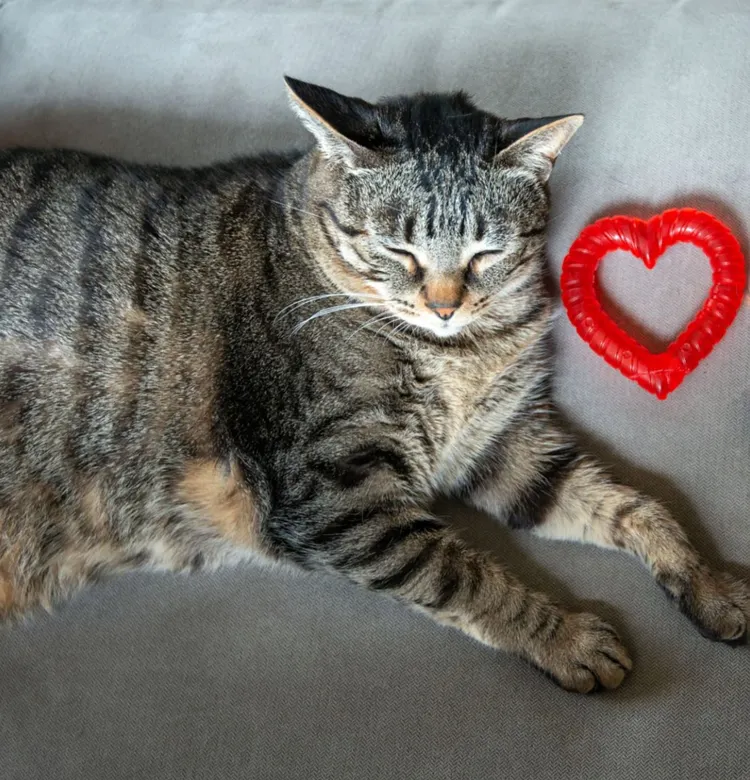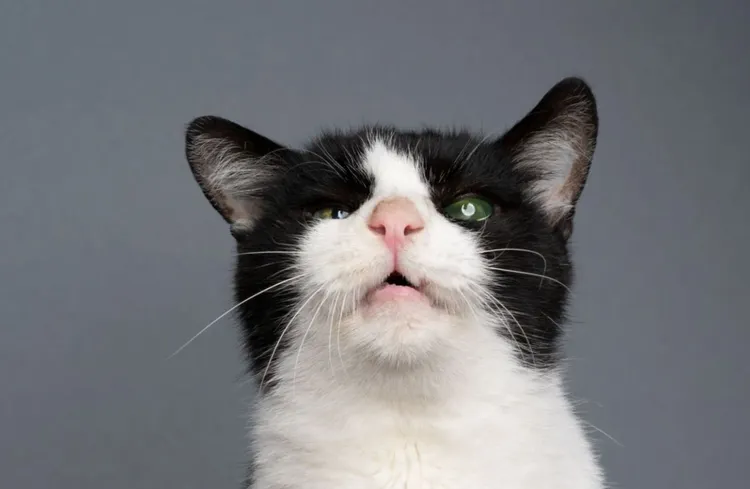Ever wondered how a cat can live its best life without teeth? Whether your feline friend has lost teeth due to age, injury, or dental issues, toothless cats can still lead happy, healthy lives—with a little extra care. As an eco-conscious pet owner, you may be looking for sustainable ways to ensure your toothless cat’s well-being while minimizing your environmental impact. In this post, we’ll explore why some cats lose their teeth, how to care for a toothless or partially toothless cat, and how to provide them with a diet that’s both healthy and eco-friendly.
Why Do Some Cats Lose Their Teeth?
There are several reasons why cats may lose their teeth. Understanding the causes can help you provide better care for your toothless companion.
1. Periodontal Disease
One of the most common reasons for tooth loss in cats is periodontal disease, an inflammatory condition that affects the gums and the structures supporting the teeth. It’s estimated that by age three, most cats show signs of periodontal disease, such as gum inflammation or tartar buildup. If left untreated, this can lead to tooth loss.
2. Aging
Just like humans, cats’ teeth can wear down and become more fragile as they age. Older cats often face dental issues like weakened enamel, gum recession, or infections, all of which can contribute to tooth loss over time.
3. Injuries
Cats are adventurous and may injure their teeth through rough play, accidents, or fighting. Traumatic injuries can cause teeth to break or fall out, especially if they go untreated.
4. Genetic Factors
Some cats are predisposed to dental problems due to their genetics. Certain breeds, such as Persians and Siamese, are known to be more prone to dental diseases and tooth loss.
5. Tooth Resorption
A lesser-known cause of tooth loss is tooth resorption, a condition in which the tooth structure breaks down and is absorbed by the body. This process can be quite painful and often leads to tooth extraction for the cat’s well-being.
In many cases, tooth extractions are necessary to alleviate pain and prevent further complications. While it may seem alarming, removing damaged teeth can vastly improve a cat’s quality of life. Once the diseased teeth are gone, a toothless cat can thrive—especially with the right care.

Caring for a Toothless Cat
Toothless cats may require some adjustments to their routine, but they can continue to live full and comfortable lives with proper care. Here are some practical tips:
1. Adjust Their Diet
Cats rely heavily on their teeth to chew dry kibble, so a major consideration for toothless cats is their diet. Luckily, there are plenty of alternatives that are soft, nutritious, and easy for them to consume.
- Switch to Wet Food: Wet cat food is easier for cats to eat without teeth. It’s soft, smooth, and can be more palatable for older or toothless cats. You can also moisten dry kibble with warm water or low-sodium broth to make it easier for them to chew.
- Eco-Friendly and Sustainable Choices: For environmentally conscious cat owners, look for organic or sustainably sourced wet food options. Brands that prioritize sustainability, use recycled packaging, and minimize their environmental footprint are a great choice.
- Homemade Recipes: If you prefer homemade meals for your pet, you can prepare simple, soft foods like pureed chicken, turkey, or fish. Just ensure these meals are nutritionally balanced by consulting with your vet. Homemade meals reduce the need for excess packaging and allow you to control the ingredients, making it an eco-friendly option.
2. Feeding Techniques
For cats without teeth, it’s important to make feeding comfortable and stress-free. Here are a few tips:
- Small, Frequent Meals: Feeding your cat smaller meals throughout the day can make digestion easier and more comfortable, especially if they’re adjusting to a new diet.
- Softer Textures: Stick to soft foods that don’t require chewing. Pureed or pate-style foods are best, as they’re easier on your cat’s gums.
- Proper Hydration: Wet foods naturally have a higher moisture content, which is beneficial for toothless cats. Ensure your cat stays hydrated by providing fresh water at all times. Using eco-friendly water fountains can encourage cats to drink more water and reduce the need for disposable water bowls.
Dental Health Even Without Teeth
Even though your cat has lost its teeth, maintaining oral hygiene is still important. Gum health is crucial for preventing infections and ensuring your cat’s overall comfort.
1. Gum Care
Cats without teeth are still prone to gum disease, which can cause discomfort and health problems if neglected. Gently wiping your cat’s gums with a damp cloth or using a veterinarian-approved natural dental rinse can help maintain good oral hygiene.
2. Eco-Friendly Dental Products
Look for eco-conscious dental care products like biodegradable wipes or natural dental sprays. These products are not only safe for your cat but also environmentally friendly, helping reduce plastic waste and harmful chemicals.

Creating a Comfortable Environment
Toothless cats may need a few modifications in their living environment to ensure they remain comfortable and stress-free.
1. Easy Access to Food and Water
Place your cat’s food and water dishes in easily accessible locations. Cats with dental issues may be less inclined to move around, especially if they’re feeling unwell, so ensuring they don’t have to travel far for food and water is key.
2. Soft Bedding and Safe Spaces
Providing cozy, soft bedding can make your cat’s resting areas more comfortable. Additionally, creating calm, quiet spaces for your cat to retreat to will reduce stress, which is especially important if they’re adjusting to life without teeth.
3. Toys for Toothless Cats
Toothless cats can still play and enjoy mental stimulation, but it’s essential to choose toys that don’t require biting or chewing. Opt for soft, plush toys or interactive wand toys that encourage movement without straining their gums.
Long-Term Care Tips for Toothless Cats
Caring for a toothless cat requires ongoing attention to their diet, overall health, and emotional well-being. Here are a few long-term care strategies:
1. Regular Vet Visits
Even without teeth, regular vet check-ups are essential. Your vet can monitor your cat’s gum health, address any emerging issues, and ensure their diet is meeting all nutritional needs.
2. Nutritional Supplements
If your vet recommends, consider adding nutritional supplements to your cat’s diet to ensure they’re getting all the necessary vitamins and minerals. This is particularly important for older cats or those with health conditions.
3. Mindful Aging
As toothless cats age, their needs may change. It’s essential to adjust their diet, grooming habits, and environmental setup to match their evolving needs. Keep an eye on any changes in their behavior, weight, or eating habits, and consult your vet if you notice anything concerning.
Eco-Friendly Tips for Caring for Toothless Cats
As a responsible and eco-friendly pet owner, here are a few more ways you can care for your toothless cat sustainably:
- Sustainable Cat Food: Choose cat food brands that prioritize sustainability by using organic ingredients, reducing plastic packaging, or supporting ethical sourcing.
- DIY Toys and Accessories: You can make your own toys and accessories for your cat using recycled or upcycled materials. For example, old t-shirts can be turned into soft toys, or cardboard boxes can be transformed into hideaways.
- Compostable Litter: Switching to biodegradable cat litter is another eco-friendly step that reduces your cat’s environmental impact. There are many options made from recycled paper, wood, or corn that break down naturally in the environment.
Conclusion
A toothless cat can still enjoy a fulfilling, comfortable life with the right care. From adjusting their diet to soft, eco-friendly foods to maintaining gum health with natural products, there are plenty of ways to ensure your cat remains happy and healthy. Remember to consult your vet regularly and keep an eye on your cat’s changing needs as they age.
By incorporating sustainable, eco-friendly practices into your cat’s care routine, you can reduce your environmental impact while ensuring your beloved toothless feline continues to thrive.



